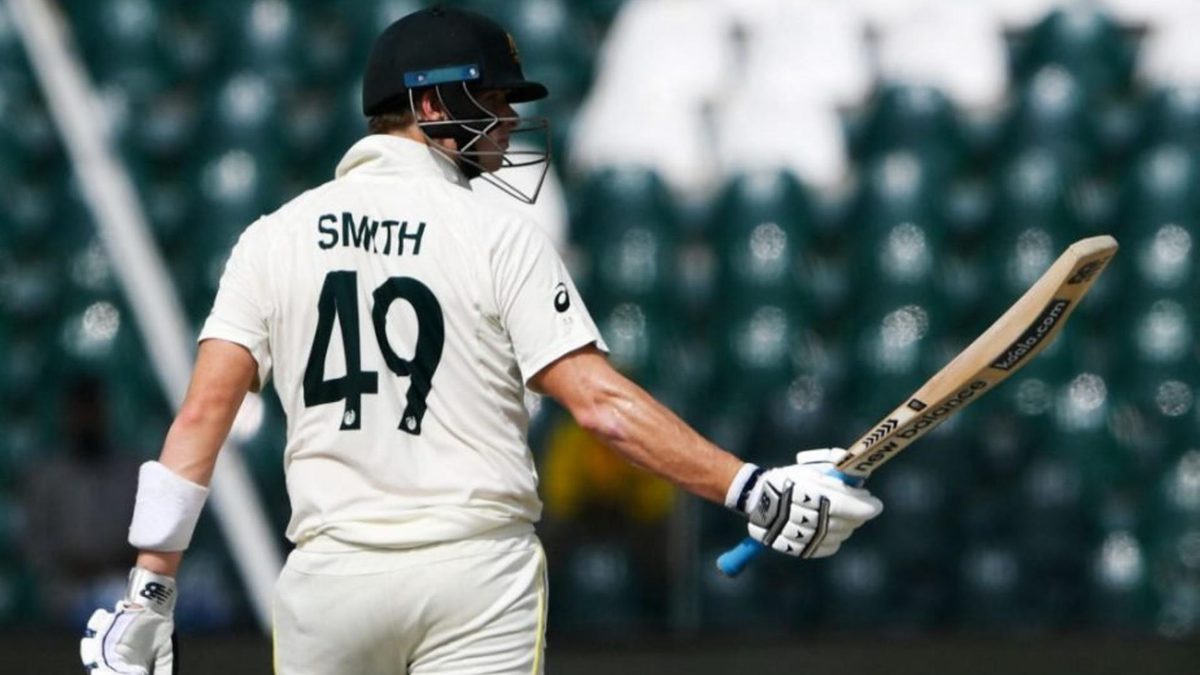
Taha Hashim was in Lahore to assess the latest version of Steve Smith.
There’s no need to think about a review. Naseem Shah, the electric 19-year-old quick, has angled the ball in and struck the front pad at 87mph. Steve Smith, attempting an on-side flick, is nowhere near it. Off Smith trudges, his head flicking back in disappointment, a job only half-done. He’s made 59.
That’s three consecutive half-centuries for Smith in this series against Pakistan. Decent. In fact, it’s excellent. Others would earn plenty of respect for that kind of streak. But Smith has set another standard for himself over the last decade; something just doesn’t feel right when he walks out there, gets himself going but doesn’t take his helmet off for the ton. Or at least that was the case for a very long time.
On a placid track at Rawalpindi, he battled to 78 before Nauman Ali’s leg-side line induced an awry sweep shot. At Karachi, it was another story of resistance over recreation: 214 balls produced 72 runs, his long stay ended by a Faheem Ashraf stunner in the slip cordon.
Here, at Lahore, Smith offered some real flow to kick things off. While his two previous knocks had seen him arrive after the new-ball shine had disappeared, he was in on Monday before the third over had wrapped up. Shaheen Afridi had dismissed David Warner and Marnus Labuschagne in the space of three deliveries and was threatening to defy another sluggish pitch to blow through Australia’s top order.
Smith went on the counter. He reeled off three sublime drives for four through the off side (two off Shaheen and one off Hasan Ali) and a delicious leg-side whip, the ball hoovered from the stumps and sent flying away for four more. Twenty of Smith’s first 23 runs came off boundaries, and it was the best he’d looked all series. He was willing to give it a meaty swing, and it showed when he faced his first ball of spin: he went down the track and launched a powerful straight hit right back at Nauman, who couldn’t hold on to a difficult chance.
As the ball got older, however, the fun calmed down. While his first 27 deliveries produced 19, it took 127 more balls to get to his half-century. It was a return to the tempo at which Smith had previously operated at in the series. You could see the path to a century, though: maybe he would ease up to take on reverse swing and spin, and then seize on the second new ball to celebrate his 28th Test ton late in the day. The reality was an early victory for Naseem.
There has been no obvious pattern to Smith’s dismissals in the series, but one thing seems clear: the ruthlessness is missing. It’s not been there for a while. When Smith was at his best, operating at a whole other level, the conversion rate was something to behold. From the start of 2014 to the end of the 2019 Ashes, 52 Tests brought 24 centuries and 22 half-centuries. Since the start of Pakistan’s tour of Australia in 2019, it’s been a different story: 17 Tests, one century and nine half-centuries.
“The first two Tests, getting 70, that’s probably a number I haven’t got out on too many times in my career,” he said before the third Test. “I think I’ve gone on to get the bigger scores, particularly on these wickets… Hopefully, [I] can get into a similar position this Test and go on and convert.” The second innings will offer another chance.
But perhaps it’s time to start looking at Smith differently. What he did for half a decade was astonishing, and it really did feel like it would go on forever. But nothing does. Bowlers develop plans and field settings – the short ball has been an effective tool against Smith in the last few years – and repeated genius, which can be taken for granted in the moment, becomes something more occasional. And that’s OK. Why? Because the genius is still there.
The obsession with three figures is a fixed part of this game, but a brief look away from it tells us that Smith remains a key contributor and integral to the make-up of this Australian Test outfit. He’s averaging 69.66 in the series. It could be that the old Smith – the one who refused to let up in the seventies – makes a return soon and enjoys the kind of run Usman Khawaja is on at the moment. For now, he’s on backing vocals and doing a decent job of it. That shouldn’t be taken for granted.








